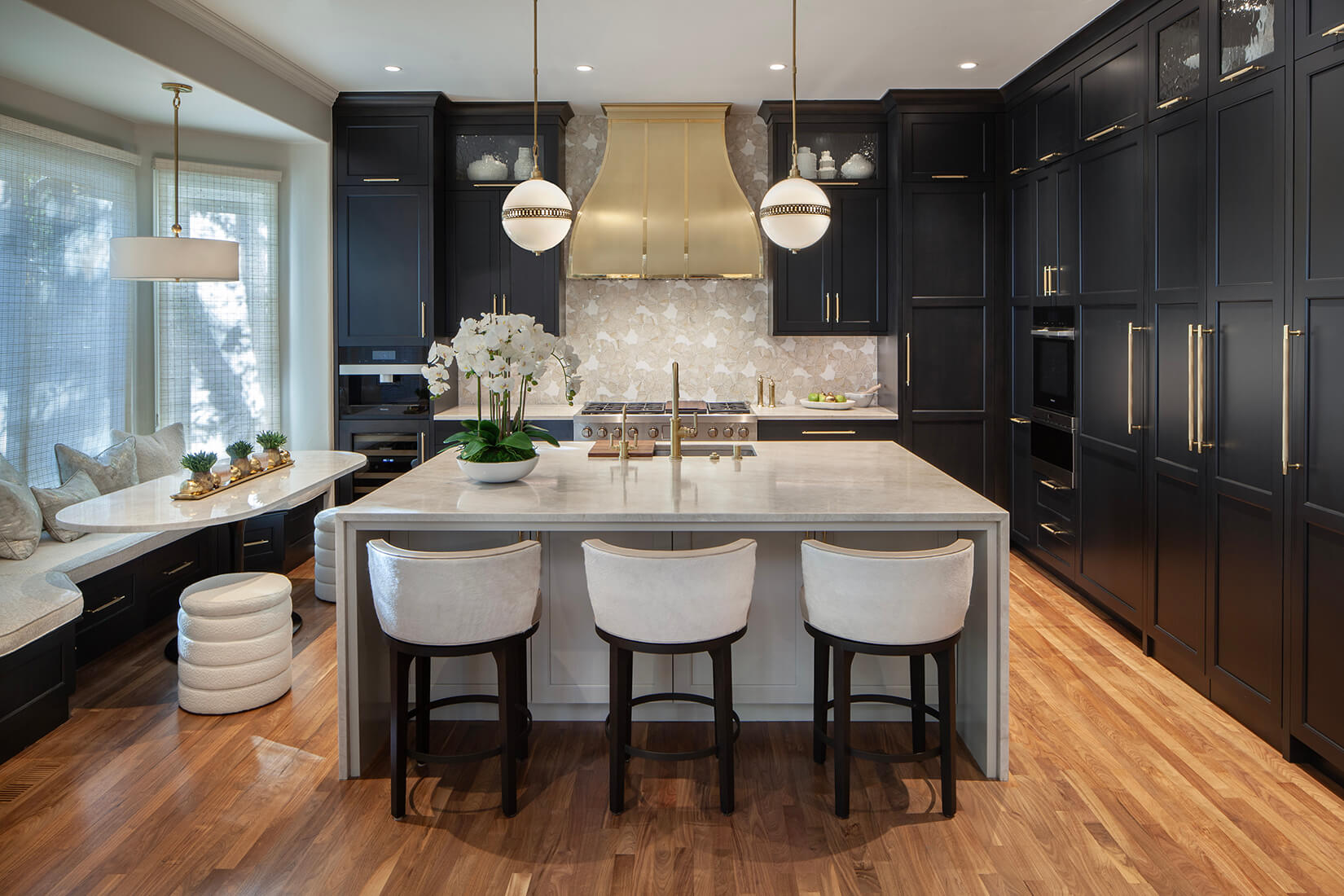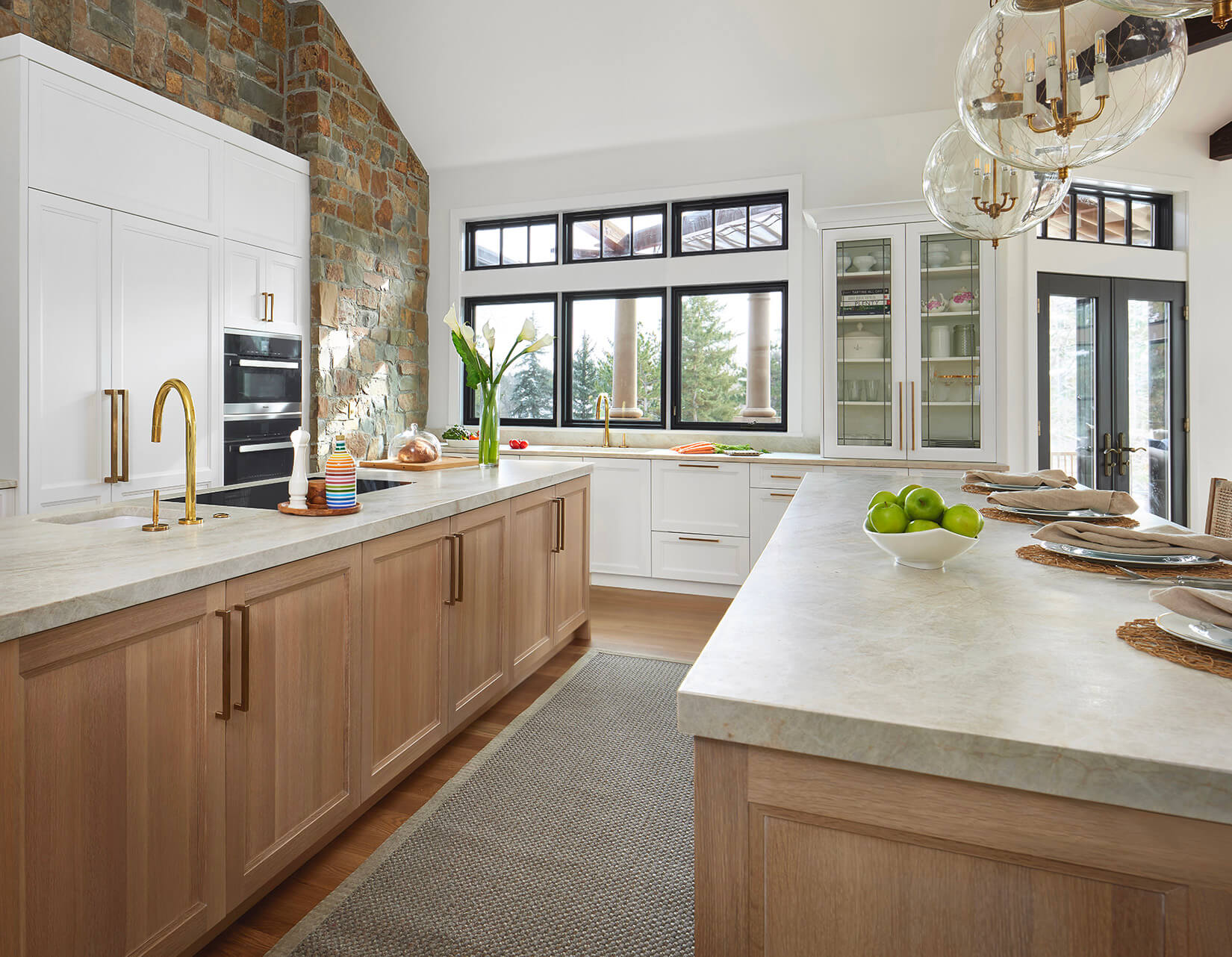
1. Cabinetry:
Cabinetry serves as the backbone of kitchen design, and its material and finish significantly impact texture. Whether opting for sleek and glossy finishes for a contemporary look or distressed wood for rustic charm, cabinetry sets the tone for the entire space. From wood to laminate, metal, glass, and stone, a plethora of materials offer various textures, complemented by styles such as raised panel, slab, or shaker. The choice of finishes, be it stained, painted, distressed, or glossy, further enhances the texture, ultimately creating a cohesive design that elevates the kitchen’s aesthetic appeal.
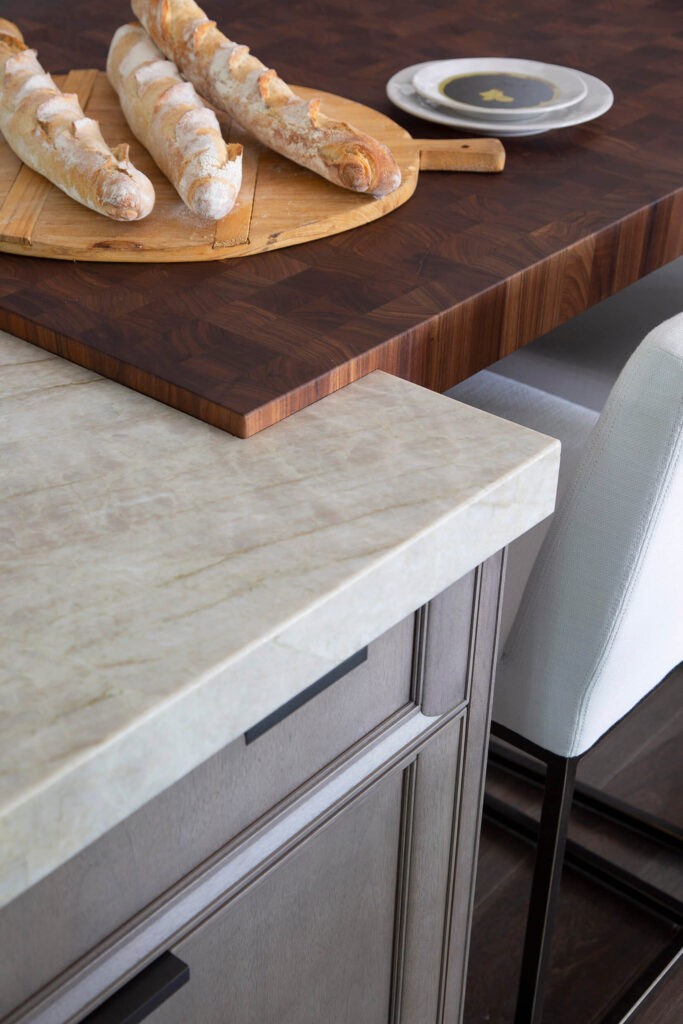
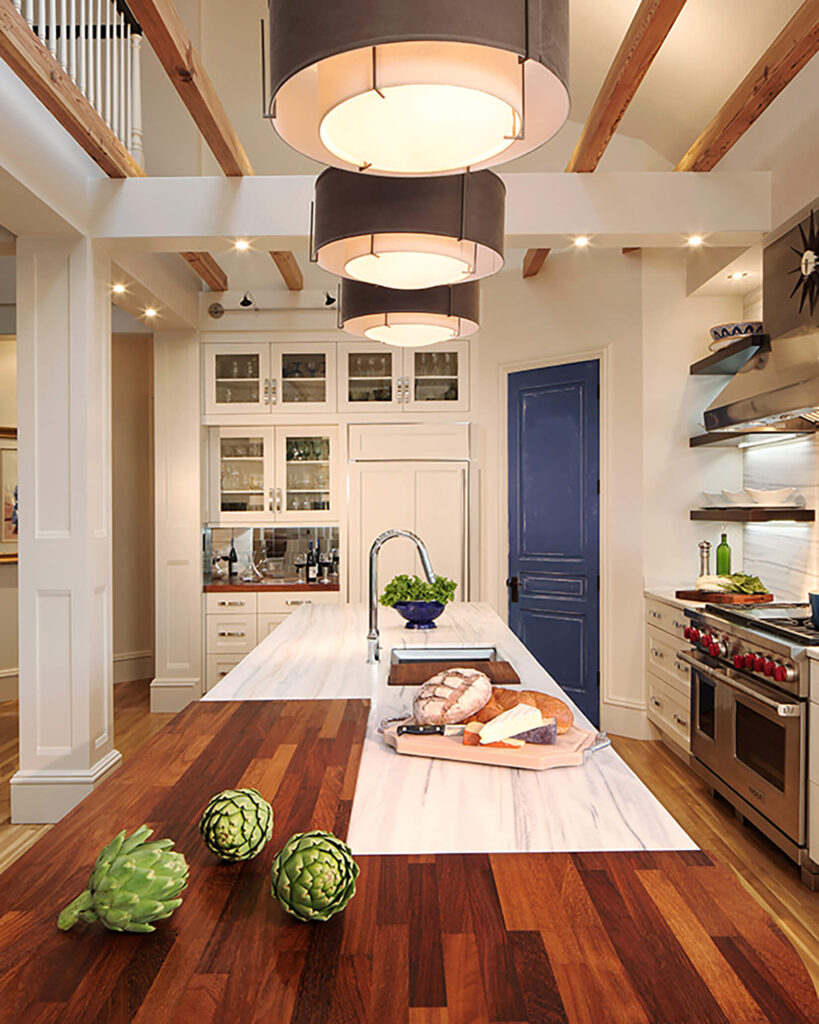
2. Countertops:
Integral to kitchen functionality, countertops also play a crucial role in adding texture. Various materials offer distinct textures and visual interests, catering to different styles and preferences. Natural stone options like granite and marble, whether they be polished, honed or leathered, boast unique variations and veining, lending depth and organic charm. Engineered quartz countertops offer uniform texture with a broad spectrum of colors, for a contemporary aesthetic. Butcher block surfaces introduce warmth and character with visible grains and knots, while concrete countertops provide customizable textures. By carefully selecting the right countertop this allows the homeowners to enhance texture while catering to their preferred style and functionality needs.
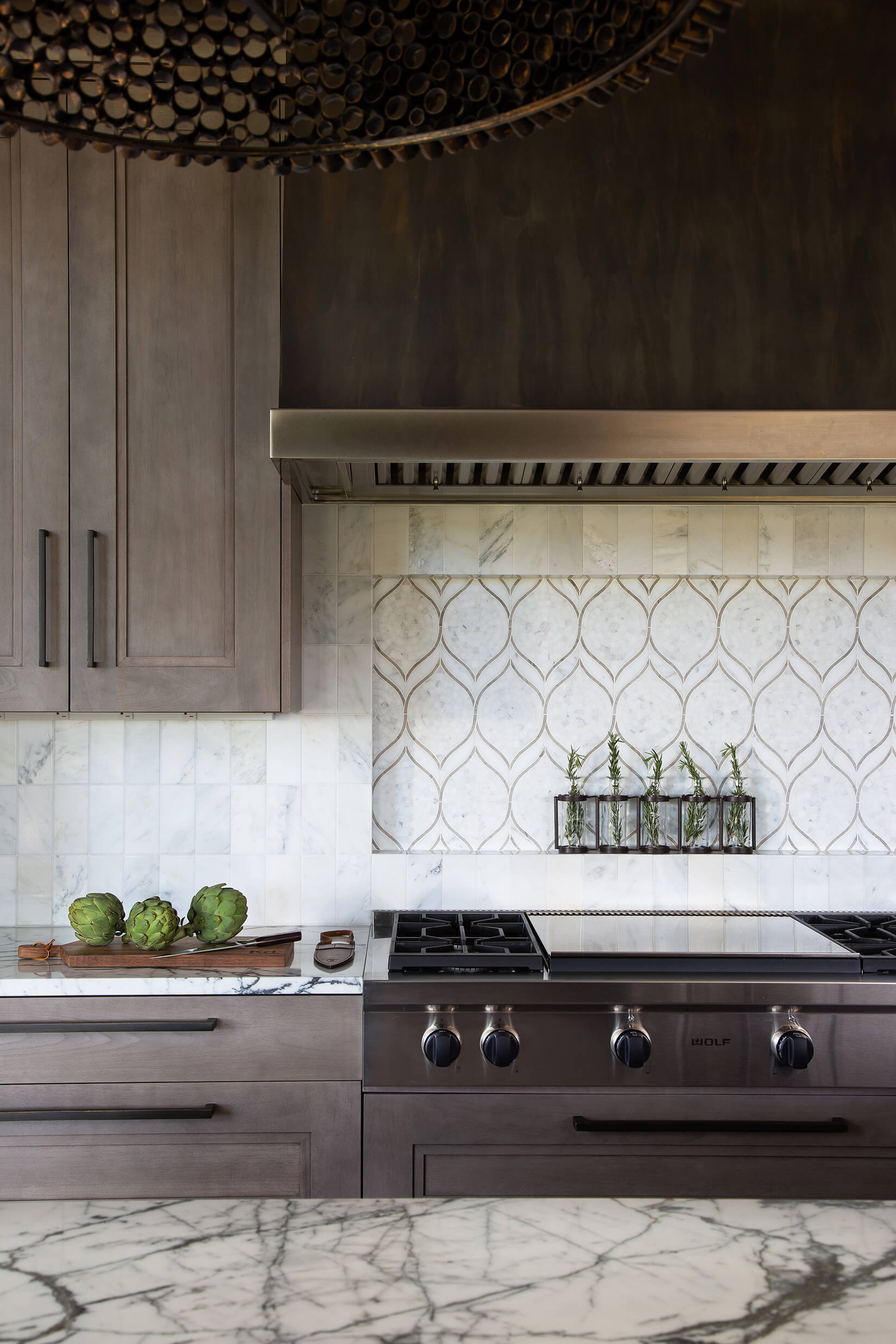
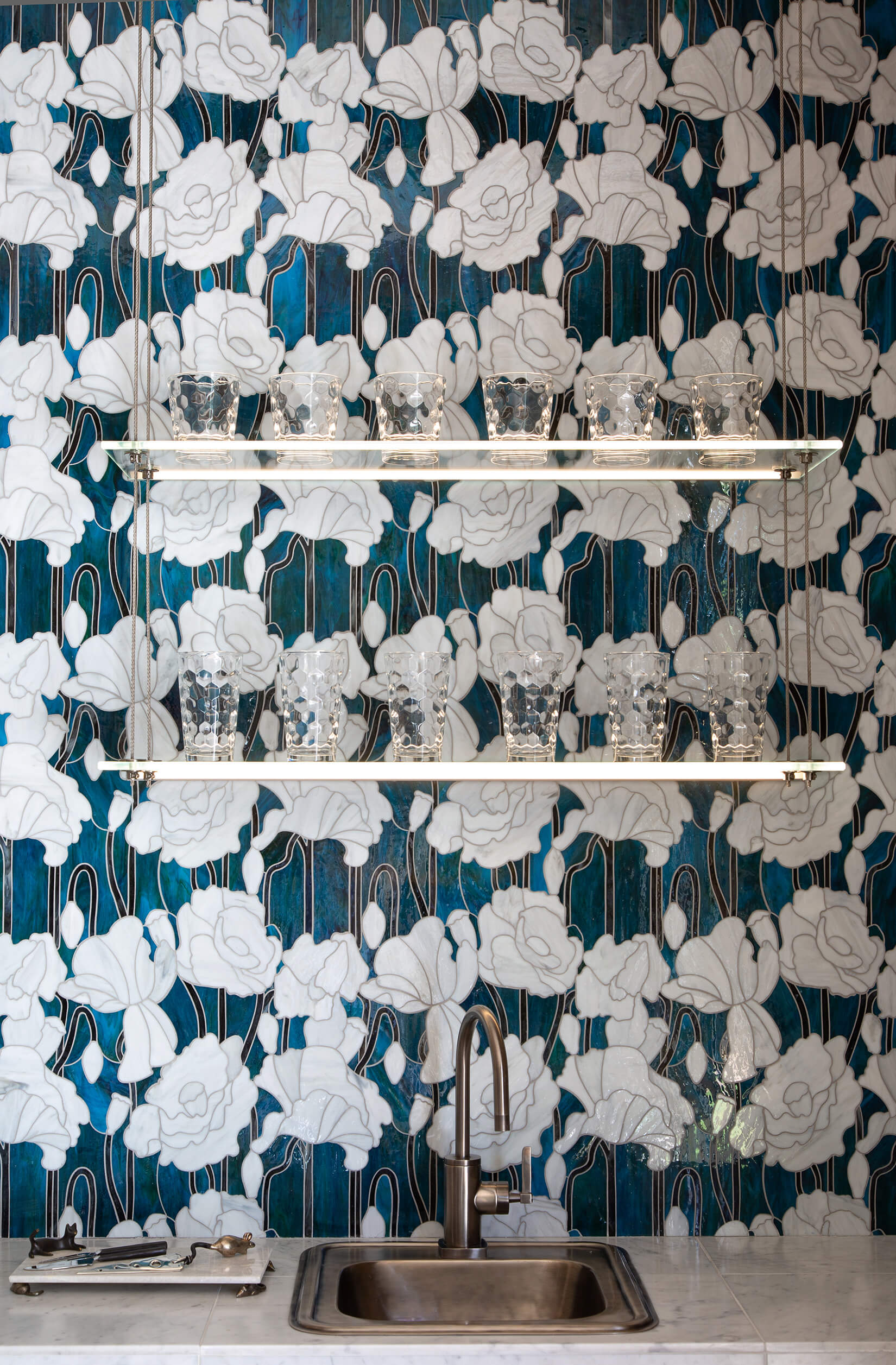
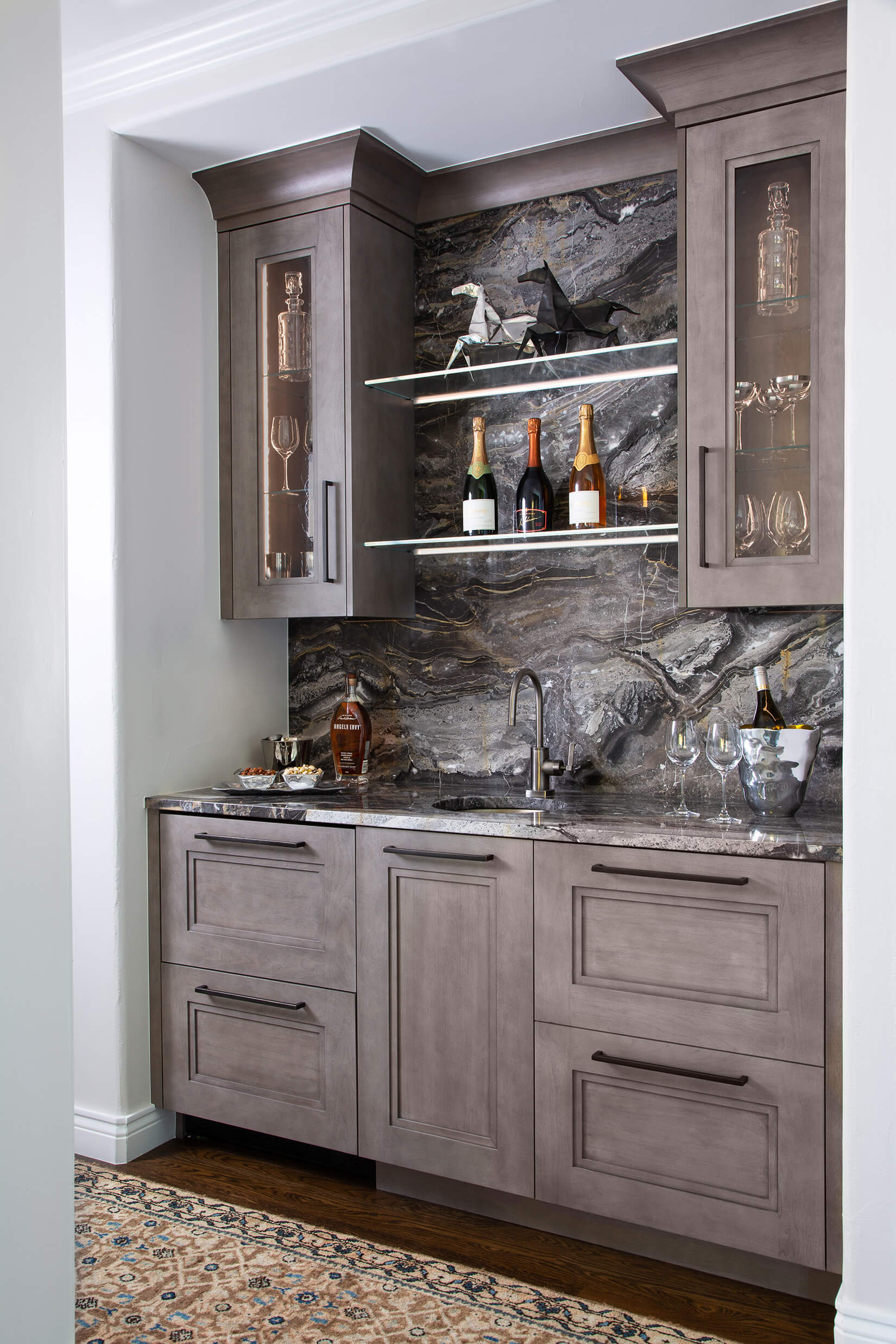
3. Backsplashes:
Backsplashes are not only functional but also serve as a canvas for texture in kitchen design. With materials ranging from ceramic and glass to stone and metal, backsplashes offer a myriad of textural opportunities. Different tile patterns and grout lines further influence the perceived texture, with options like subway, herringbone, and contrasting grout colors adding depth and dimension. Incorporating mixed materials and decorative accents like hand made tiles or mosaics enriches the texture, enhancing the overall aesthetic appeal of the kitchen.
4. Flooring:
Flooring materials such as hardwood, tile, laminate, vinyl, concrete, and natural stone contribute to the tactile experience of the kitchen. Hardwood flooring adds warmth and character with its natural grain patterns, while tile layouts create visual interest and depth. From matte to glossy surfaces, flooring choices impact texture and mood, with color and tone selections further influencing the overall ambiance of the space.
5. Hardware:
Often overlooked but equally significant, hardware choices in kitchen design contribute to texture and visual interest. With materials like stainless steel, brass, bronze, or hand forged, hardware adds tactile qualities that complement cabinetry and other elements in the kitchen. From intricate kitchen designs to contrasting finishes, hardware selections allow for customization and personalization, ultimately enhancing the overall texture of the space.
6. Lighting Fixtures:
Lighting fixtures not only illuminate the kitchen but also play a vital role in shaping its overall texture. With materials like metal, glass, fabric, or wood, fixtures offer diverse tactile experiences that add depth and personality to the space. Bulb selection, fixture placement, and layering techniques further enhance texture, creating a visually rich and inviting atmosphere.
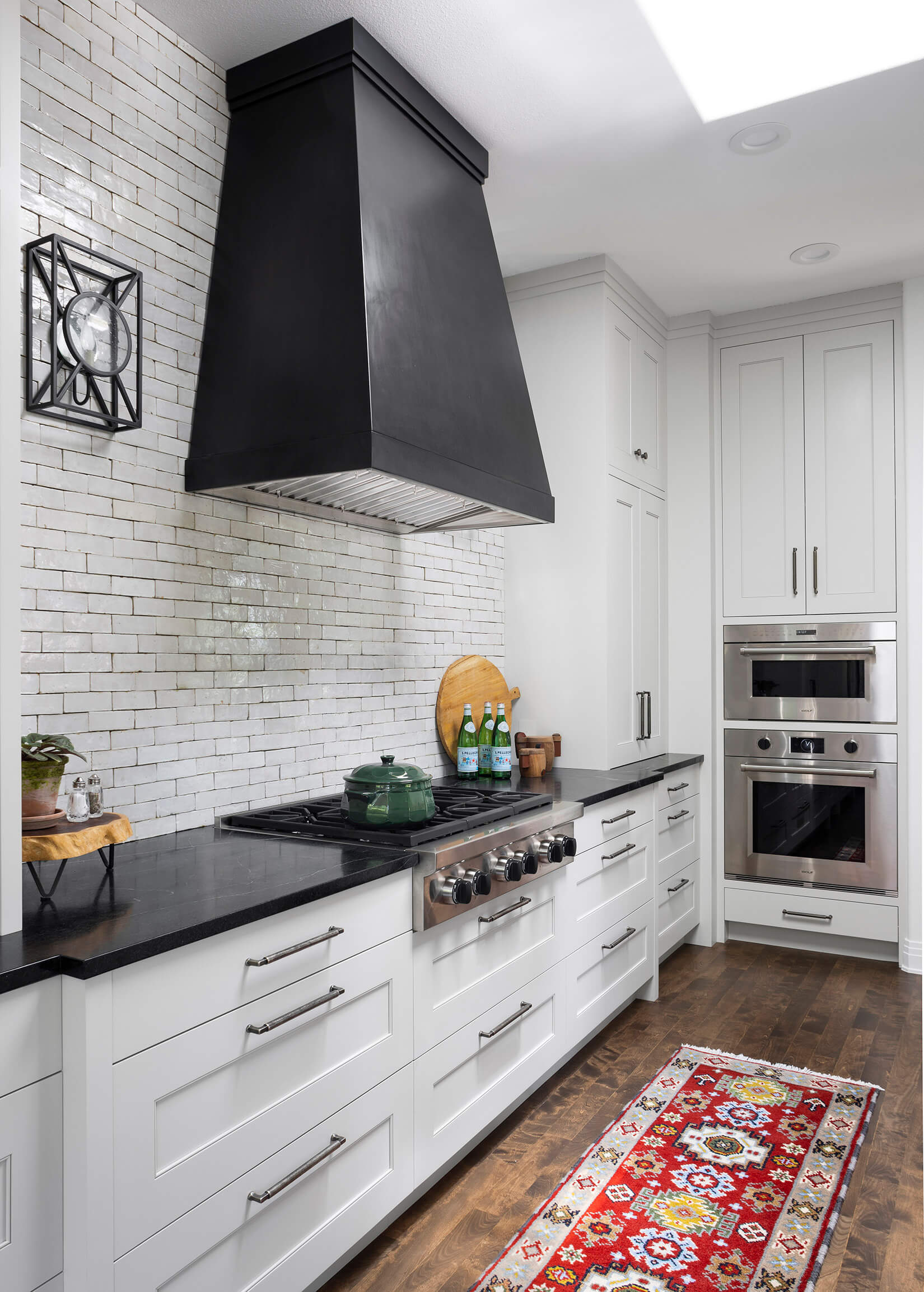
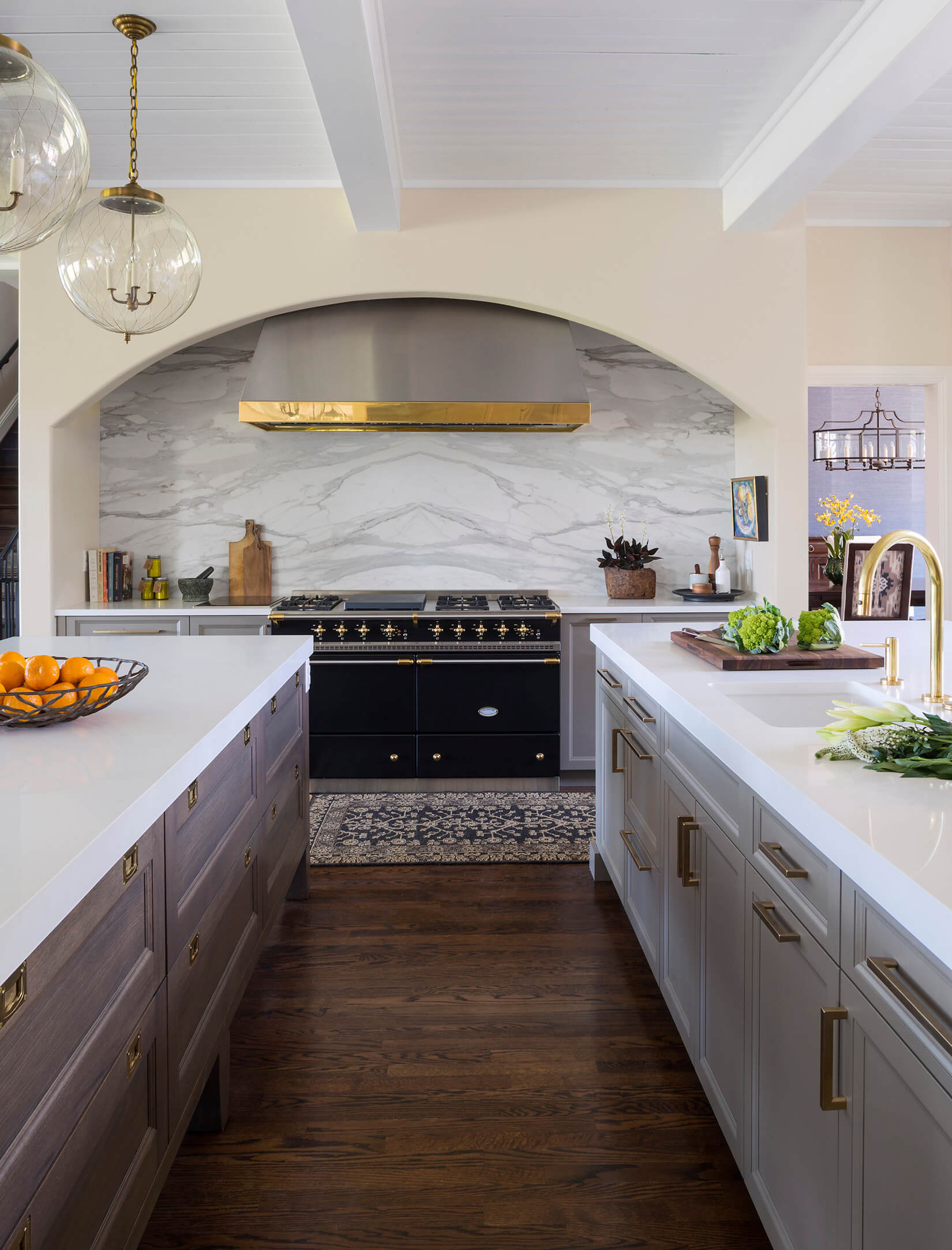
7. Appliances:
Appliances, essential for kitchen functionality, also contribute to texture in design. With options ranging from stainless steel to painted finishes or custom paneling, appliances offer diverse tactile qualities that interact with surrounding elements. Paying attention to size, scale, and integration allows homeowners to enhance texture while maintaining a cohesive look and feel in the kitchen.
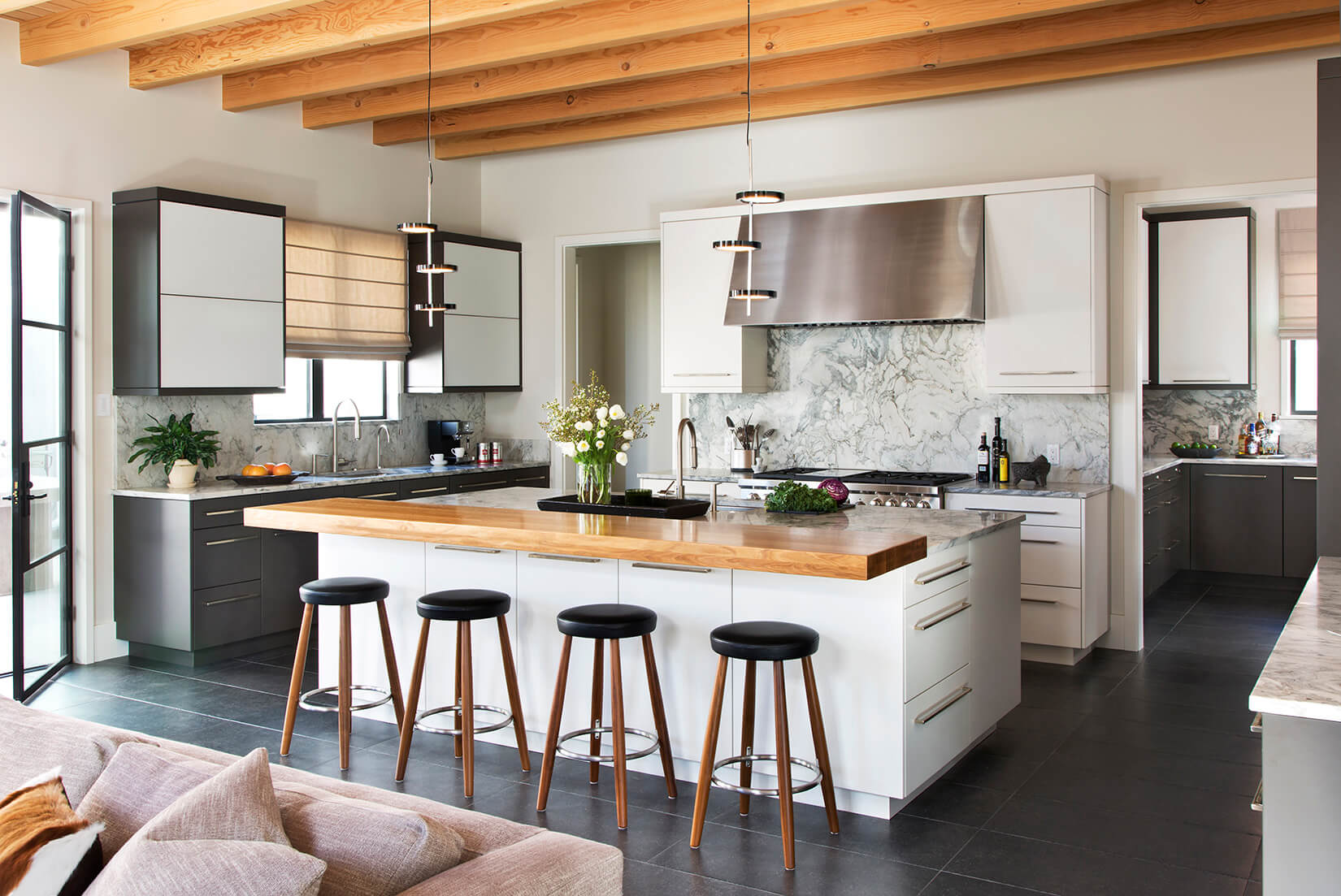
8. Natural Elements:
Incorporating natural elements such as wood beams, stone accents, and indoor plants adds organic textures that soften the overall look of the kitchen. Wood beams, for instance, may showcase natural knots and variations that add warmth and character. Stone accents, whether in the form of a backsplash, countertop, or decorative feature, introduce rugged textures that contrast with smoother surfaces like cabinets or countertops. These elements bring visual and physical interest, creating a harmonious and inviting atmosphere that connects with nature.
9. Furniture and Accessories:
Lastly, furniture and accessories play a significant role in adding texture and personality to the kitchen. From wooden bar stools to upholstered chairs and decorative accents like cushions or rugs, these elements offer richness and visual interest. By mixing different textures, shapes, and designs, layers of interest can be created to enhance the overall texture and feeling of the space.
When designing a kitchen, textural elements are essential components of the overall design, contributing to its visual appeal, functionality, and mood. By carefully selecting and integrating these elements, homeowners can create a cohesive and inviting kitchen space that reflects their personal style and enhances their overall living experience.
Kitchen Distributors is an award-winning kitchen design team that turns your dream kitchen in Denver, CO to a reality. From concept to full-service construction, we take care of all the details of your future kitchen design, so you can focus on what matters.

